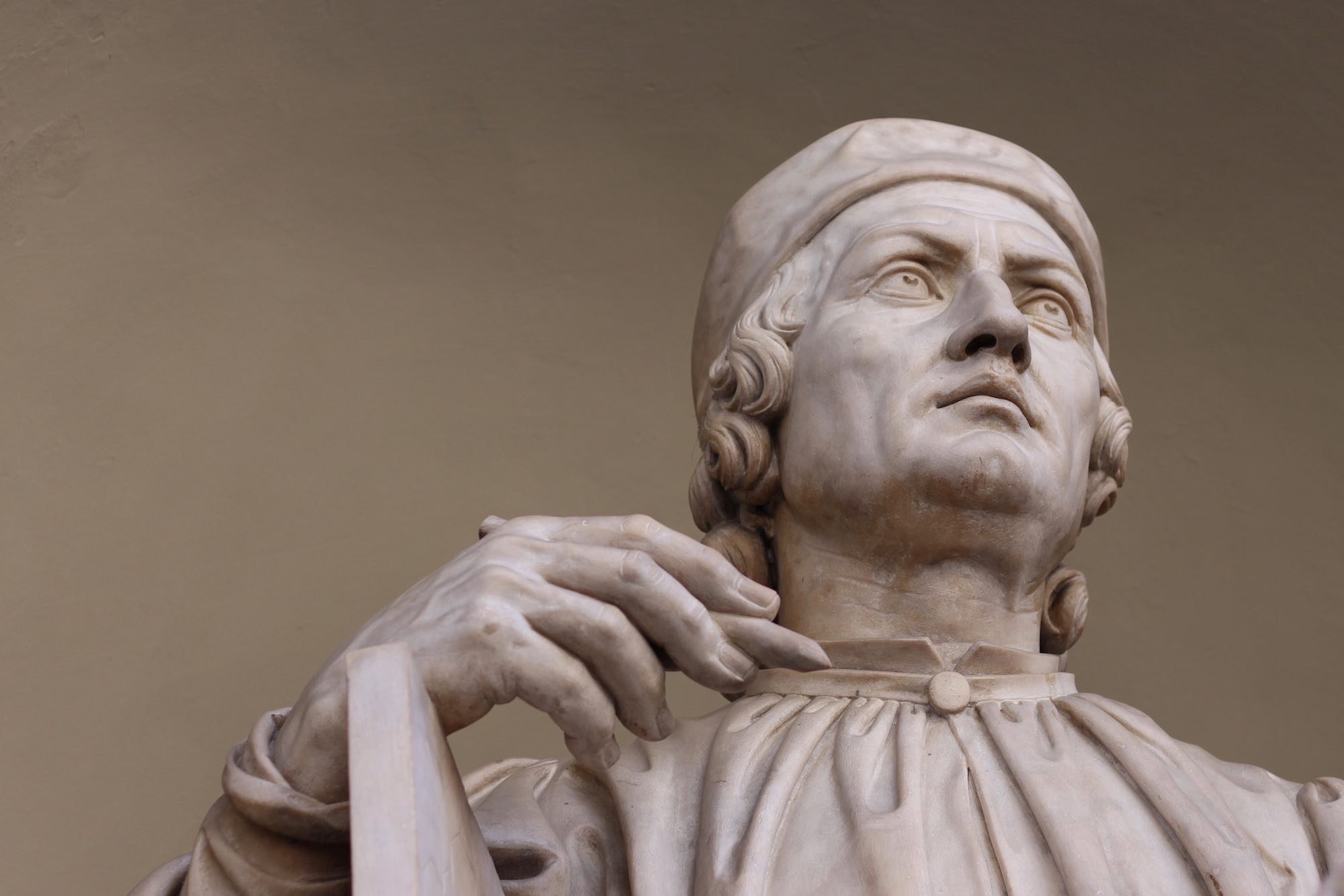One of the important architects and sculptors of Italian history: Who is Arnolfo di Cambio?
In his days, many people yearned for Ancient Rome. Interest in ancient art was a common trend among leading artists of the time.

(? -1302) Italian sculptor and architect. Inspired by ancient art as well as the Gothic style, he became one of Florence's most influential artists of the 13th century. Born in the Colle di Val d'Elsa, near Florence, he is thought to have died in Florence in 1302. He grew up in Nicolo Pisano's sculpture workshop. In 1264-1268 he helped build the Sarcophagus of San Domenico in Bologna and the marble pulpit of the Cathedral of Siena. Later, he went to Rome in 1277 and began working under the guardianship of Charles d'Anjou, King of Sicily. Two monuments are known from this period, with a statue depicting Charles seated.
Upon a call he received, he went to Perugia and built a fountain in 1281. Three figurine fragments showing thirsty people have survived this fountain. The artist was later commissioned to build a mausoleum in San Domenico in Orvieto for Cardinal Guglielmo De Braye, who died in 1282. This was followed by the construction of the altar baldachins (ciborium) of the churches of San Paolo Fuori le Mura and Santa Cecilia in Rome. It is claimed that the statue of St. Peter in the Old San Pietro Church is his work.
It is debatable whether the architect Arnolfo and the sculptor Arnolfo are the same people. But most likely the sculptor Arnolfo was also the architect of Florence Cathedral. A document dating from 1300 praises the cathedral's chief architect, Arnolfo. Indeed, this building was a huge undertaking for that period. Its construction began around 1295. It was envisaged that there would be many sculptures on the front of the building. Some of these sculptures made by Arnolfo have survived to the present day. The cathedral was subsequently enlarged and modified considerably. It is thought that Arnolfo also designed the San Croce Church in Florence.
In the works of Arnolfo's first period, which lasted until his arrival in Rome, a style that includes simple, geometrical forms are followed. Their figures have the appearance of motionless masses. His clothes were embroidered in very loose, twisted fabrics. Fragments from the fountain in Perugia have similar features. However, traces of ancient art can also be found in these works. In the Holy Roman Empire of those days, many people, especially the emperor Frederick II, yearned for Ancient Rome. Interest in ancient art was a common trend among leading artists of the time. For example, Pisano studied ancient sculptures with great curiosity. The role of his master Pisano was first in Arnolfo's influence on ancient art. But the share of the ancient ruins, which he saw closely during his years in Rome, is greater. 13th-century Italian artists' interest in ancient art gave it a new quality rather than putting an end to the Gothic style.
Arnolfo also assimilated the characteristics of Antiquity with excellence, but he did not break away from the Gothic style in his works. Both of the altar baldachins he built in Rome are typical examples of the Gothic style, with their pointed arches, ornamented triangular pediments, and statues on the corners. Arnolfo's works also played an important role in the emergence of the simple, unadorned style that dominated Florence's Gothic sculpture and architecture in the next century. For example, the Tomb of Cardinal De Braye has been a prime example of this genre for over a century. Among the various sculptures on the sarcophagus, the figure of Mary, reminiscent of Classical Period goddesses, clearly reflects the influences Arnolfo received from ancient art. The sculpture of Charles d'Anjou, which the artist made in Rome in 1277, is one of the first examples of modern portrait sculpture.
WORKS (mainly):
Portrait of Charles d'Anjou, 1277, Rome;
Perugia Fountain, 1281, Its Remains are in Galleria Nazionale deli' Umbria;
Tomb of Cardinal Guglielmo De Braye, 1282, Orvieto;
The altar baldachin of the Church of San Paolo, 1285,
Rome; altar baldachin of the Church of Santa Cecilia, 1293, Rome;
Florence Cathedral, approx. 1295;
Pope VIII. Bonifacius Statue, Rome;
Hononus Monument, Rome.
----------------------------------
Works in Rome (1280-1300)
https://www.wga.hu/html_m/a/arnolfo/2/index.html
